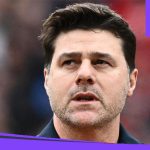Doping is the dirtiest word in sports and footballs biggest secret. Through a combination of denial, ignorance and fear, football has escaped the kind of credibility stripping publicity that has left the reputation of other sports permanently scarred.
Coaches, players and fans take pride in “their” sport being the cleanest, but the evidence points to the contrary.
Those with the means to expose the horrible reality have so far chosen not to pull on that loose thread.
The most high profile modern case is that of Doctor Eufemiano Fuentes. In 2006, Spanish authorities’ investigations uncovered a shockingly wide doping network around Fuentes. The evidence implicated most of Europe’s leading cyclists, but people weren’t overly shocked at the confirmation of something that most suspected anyway.
The most compelling evidence produced by Operacion Puerto suggested that it wasn’t just cyclists who were “treated” by Fuentes. This was of course around the time when Spanish teams and athletes had started to dominate their respective fields.
Fuentes has admitted in the past he worked with clubs from La Liga. In fact Real Madrid and Barcelona successfully sued French newspaper Le Monde for saying he worked for them.
He is also alleged to have said “If I would talk, the Spanish football team would be stripped of the 2010 World Cup”, but the lack of hard evidence makes it a difficult topic to discuss.
Spain had a wonderful team, based on technical ability; something many would claim cannot be enhanced with EPO and the like. Their intense pressing game did require impressive levels of stamina, but is it fair to cast doubt on their achievements? How much of a leap do we need to take to consider something so horrible?
What is perceptible is that something is being covered up. During Fuentes court hearing following Operacion Puerto, presiding Judge Julia Patricia Santamaria denied Fuentes permission to reveal any of his client names outside of cycling.
Fuentes was given a one year suspended jail sentence for performing blood transfusions often combined with banned substances on top cyclists. He was found guilty of endangering public health, barred from medical practice in sports for four years and ordered to pay a fine.
In the most galling development, Judge Santamaria ruled that over 100 bags of blood and plasma seized in the case against Dr. Eufemiano Fuentes as well as critical documentation should be destroyed after the appeal process. What could have been damning evidence implicating other sports stars and football stars in particular, would be lost forever.
The Fuentes case left many questions unanswered, but it certainly doesn’t stand in isolated testimony. To say doping in football is prevalent would be unfair, as the evidence, whether hidden or otherwise, currently doesn’t support such an accusation. But many high profile cases throughout the games history suggests it could be far more common than many of us are ready to admit.
Under Helenio Herrera, Inter were European football’s biggest hitters during the 1960’s. Their best player was the famous schemer Sandro Mazzola. Mazzola’s brother Ferruccio, also a member of the team recalled manager Herrera’s practices in his autobiography:
Herrera provided pills that were to be placed under our tongues. He used to experiment on us bench players only to later give them to the first team players. My brother Sandro suggested to me that if I had no intention of taking them, I should just run to the toilet and spit them out. Eventually Herrera found out and decided to dilute them in coffee. From that day on “Il Caffè Herrera” became a habit at Inter.
The famous Ajax side of Rinus Michels and Johan Cruyff is considered one of the game’s best ever club teams. But team mate and defender Barry Hulshoff who won the European Cup with the Dutch side in 1971, 1972 and 1973, confessed that that he and his teammates at Ajax occasionally received pills from Dr. John Rolink. In a 1973 interview, Hulshoff said to Vrij Nederland:
I can remember well, a season or five ago, just before the away game against Real Madrid, we received a white pill, and also something in a capsule. We called it Hagelslag [chocolate sprinkles] I have no idea what it was. You felt very strong and never were out of oxygen. The bad thing was that you lost all saliva in your mouth.
Believe me, I’m just scratching the surface here, Google John Rolink and read it for yourselves. Google Beckenbaur’s blood injections. Google “Stärkungschemie” (literally, Strengthening chemistry) and Toni Schumacher the famous German goalkeeper who was banned from the national team BY Beckenbaur for speaking out about rampant doping in the German game.
One of the most frightening doping cases in football, is that of the Algerian national team who shot to prominence, qualifying for the 1982 and 1986 World Cups. In a shocking goal.com interview, former player Djamel Menad described a harrowing consequence of the doping administered by a Soviet doctor – he and seven of his teammates now have severely handicapped children.
Former Irish international Tony Cascarino admitted to receiving injections in his autobiography, while recalling his time at Marseille in the early 90s.
After these injections I felt sharper, more energetic… if they’d discovered an illegal product I would have taken the ban. It was a risk I was prepared to take.
Marseille famously won the European Cup in 1993, beating Italian giants Milan 1-0, but it seems they had more than a little help if their former defender Jean-Jacques Eydelie is to be believed:
On the day of the Final, Bernard Tapie demanded that all players should take a banned substance. All of us joined in a line, except one player: Rudi Völler. He was enraged and shouted German insults against the entire Marseille staff. He was really outside himself and could barely calm hilmself down.
The French club were not just content to financially fix matches it seems.
Mercurial Brazilian forward Ronaldo’s career was tragically cut short by injuries, which according to Bernardino Santi, the anti-doping official at the Brazilian football Federation, were a result of “treatment” he had at Dutch club PSV.
I spoke to some colleagues in Holland. They told me that Ronaldo, who was very fragile at the time, received steroids during his period at PSV. As a result his muscles grew more than his tendons were capable of sustaining.
Santi was fired by the Brazilian FA, but his claims were later substantiated by Italian biographer Enzo Palladini, who wrote a book about Ronaldo.
The famous Juventus side of the early to mid nineties, a team graced with the likes of Del Piero, Ravanelli, Deschamps, Vieri and Zidane also achieved glory through controversial circumstances. A Turin based magistrate Raffaele Guariniello launched an investigation into the club, eventually building enough evidence to gain a conviction against Juve club doctor Agricola, who was found guilty of administering illegal substance to players including EPO.
Staggeringly, neither the club nor any of the players were punished. Agricola was even allowed to stay on as Juventus club doctor.
Of course we cannot forget the nandrolone (an anabolic steroid) scandals of the early 2000s, where bans were handed down to high profile players like Jaap Stam, Edgar Davids, Frank de Boer, Fernando Couto and Pep Guardiola. Guardiola was playing at Brescia at the time, where his club doctor was Ramon Segura – the same Segura who worked for Pep during his highly successful spell managing Barcelona.
One of cycling’s most famous ‘doping doctors’, Luis del Moral is also said to have worked with Barcelona under the guise of “medical advisor”.
That brings us full circle again to Fuentes case and his controversial links with the all conquering Spanish clubs and national team.
French publication Le Monde in 2006 claimed to have obtained two sheets of paper from Dr Fuentes’ Canary Islands residence. According to Le Monde, the documents reveal that Real Madrid and FC Barcelona were making use of Fuentes’s services.
They show, for example, that the main objective of FC Barcelona was to win the Champions League in May, which they did, as well as having the players in peak condition for the World Cup. The training programs include circles and ‘IG’ symbols that correspond to preparation or rest periods. These are the same symbols that used in Fuentes plans for Basque club Real Sociedad – the only team CONFIMRED to have worked with Fuentes. But who cares about Sociedad eh?
Barcelona and Real Madrid are given the kind of protection and treatment by the Spanish government and football authorities that the rest can only dream of. With that in mind, it seems highly likely that any damning evidence will continue to be swept under the rug.
This is a dark cloud over a multi billion euro industry that has everything to lose and every reason to maintain a “drug free” façade. One would think that all it would take is one major controversy to bring the integrity of the game tumbling down like a tainted house of cards – but really, the evidence has been there all along. Do we just not want to admit it? Do we love the game too much to accept such a corrupt and rotten truth? It seems the world just isn’t ready for the purity of football to be besmirched.








